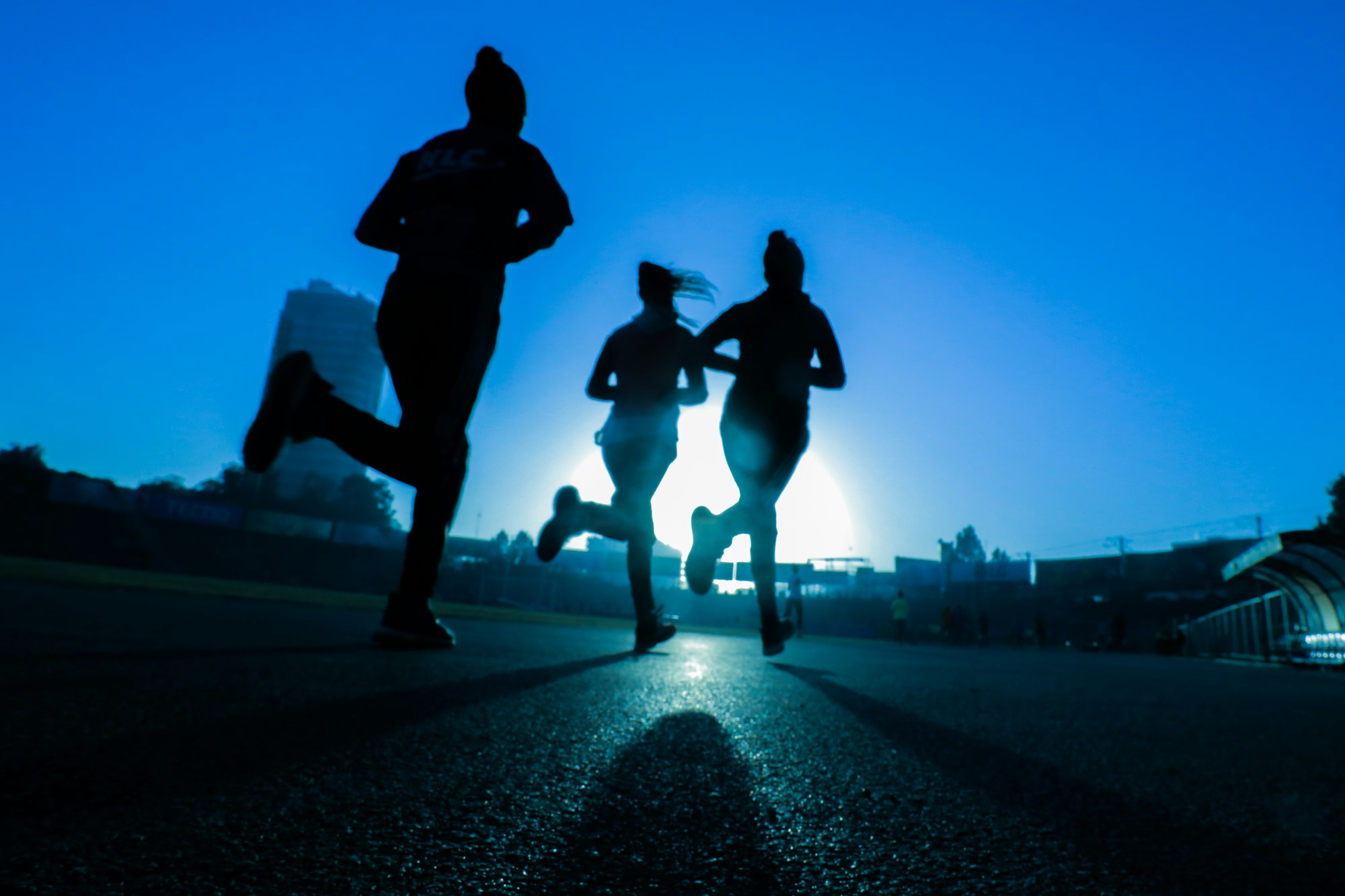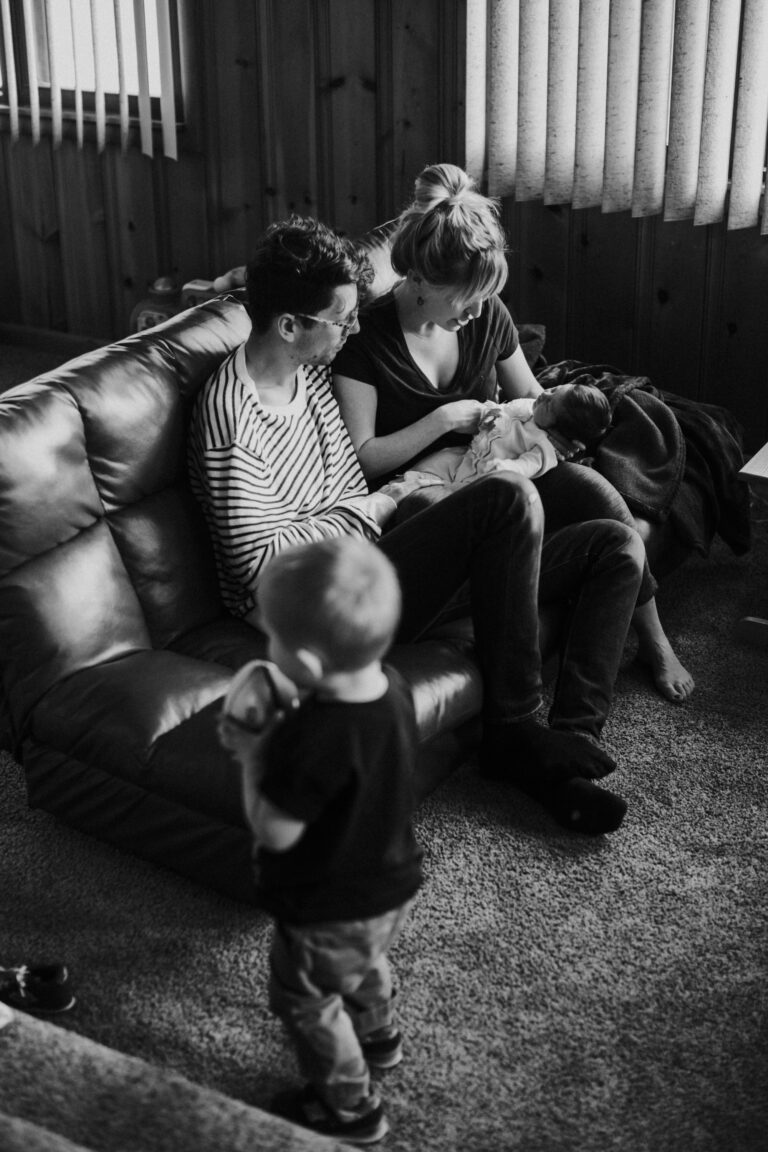When you think about your family’s wellbeing, a surprising number of questions often pop up, don’t they? What if your child refuses to join a team, or you’re constantly chasing that elusive routine where everyone—parents, toddlers, teens—moves together, even just for a few moments a day? Countless parents juggle busy schedules, nagging fatigue, or struggle to spark their children’s enthusiasm for exercise. Yet, the health benefits of physical activity and sport remain powerful—often underestimated—tools that reinforce physical, mental, and social health across all ages. Today’s daily habits, whether a walk to the park or joining a local sports club, quietly shape health trajectories and long-term family dynamics. Let’s untangle the complexities, spotlight the science, and nurture fresh perspective: energy, confidence, resilience, and joyful connection—these are within reach.
What Counts as Physical Activity and Sport? Definitions and Nuances for Families
Physical activity, at its core, means any bodily movement that burns energy. Imagine gardening, cycling, climbing the stairs with a toddler on your hip, or even quick bursts of jumping during playtime—every bit counts. Sport, meanwhile, refers to rule-based, often competitive activities: soccer, swimming, basketball, but also less traditional ones like fencing or badminton. The distinction matters, because while every sport is physical activity, not every movement is sport. Some children thrive in structured environments; some simply need an invitation to explore, to build confidence without competition. Both avenues confer profound health benefits of physical activity and sport—with individualized paths suiting diverse personalities and needs.
Physical Health: Cardiovascular, Muscular, and Skeletal Strength
Cardiovascular and Heart Health: More Than Just a Strong Pulse
Drop one coin of effort into the daily piggy bank of movement, and the heart rewards you many times over. Regular aerobic activity—think brisk walking, cycling, family tag in the garden—fortifies the cardiac muscle, boosts vascular flexibility, and helps maintain healthy blood pressure. The physiological magic unfolds in arteries: less plaque buildup, lower risk of atherosclerosis, and a tangible reduction in the chance of heart disease or stroke, whether you’re five or fifty. Scientific studies repeatedly emphasize that a simple ten-minute addition to your day—a stroll, a quick jump rope session—can markedly increase both longevity and quality of life.
Muscular Endurance and Weight Regulation
The tug-of-war between energy intake and expenditure often starts in childhood. Regular exercise naturally balances this equation, burning calories and preventing unhealthy weight gain. For children, energetic play stimulates muscle growth and fosters proper body composition (meaning a healthy ratio of muscle to fat). For adults, especially those balancing work and parenting, strength routines counteract the gradual muscle loss that comes with age—safeguarding metabolism and helping manage body weight long-term. The ripple effect? Lower incidence of obesity-linked conditions, from metabolic syndrome to joint disorders.
Bone Density and Joint Health: Building a Lifetime Foundation
You might wonder—how does running in the park or clambering over jungle gyms relate to lifelong bone health? The explanation draws from basic biology: bones respond to pressure. Activities like jumping, sprinting, or even brisk family walks prompt bones to build strength and density, reducing the risk of osteoporosis or fractures as we age. Children and adolescents, whose bones are naturally more responsive, benefit most from varied movement. In older adults, preserving joint mobility and balance through consistent activity proves key—not just for comfort but for maintaining independence and safety as the years advance.
Digestive, Respiratory, and Immune Function
Regular movement boosts gastrointestinal transit, making digestion smoother and reducing episodes of constipation, a frequent complaint in sedentary households. On the broader spectrum, pulmonary benefits are astonishing: exercise expands lung capacity, toughens breathing muscles, and enhances airway responsiveness. The immune response is no less impressive: moderate activity increases the circulation of protective cells, supporting the body’s frontline defense against infections. For families grappling with asthma or recurrent colds, routine movement offers measurable improvements in respiratory health and immune resilience.
Chronic Disease Prevention
Scientific literature robustly upholds the health benefits of physical activity and sport in preventing chronic diseases. Exercise regulates insulin sensitivity, diminishes inflammation markers, and reduces risks for type 2 diabetes, hypertension, and even several forms of cancer (notably breast and colon). Early patterning—encouraging movement from a young age—yields protective effects that echo into adulthood, lowering lifetime risk and contributing to a stronger, healthier future for everyone.
Mental and Emotional Health: Mood, Cognition, and Resilience
Mood Regulation: The “Feel Good” Chemicals Explained
Ever noticed a lighter mood after a quick jog or an energetic dance session with your child? Movement triggers the release of neurotransmitters—endorphins and serotonin—well-established mood enhancers. These brain chemicals directly mitigate anxiety, buffer against symptoms of depression, and alleviate the weight of everyday stress. For children, structure and play also foster emotional resilience: learning to manage frustration, handle setbacks, and celebrate small victories—skills just as important as mathematical equations or reading fluency.
Executive Function, Focus, and Cognitive Growth
Is it just a myth that exercise sharpens the mind? Far from it. Repeated studies show that active children possess greater powers of focus, better working memory, and heightened executive function. For adults, regular activity reduces the risk of cognitive decline: increased oxygen delivery to the brain supports neurogenesis (the creation of new neurons), benefitting memory retention and mental agility. Physical activities demanding quick decision-making or coordination (like team sports, martial arts, or dance) supercharge creativity and flexible thinking, equipping both children and parents for complex problem-solving.
Healthy Sleep Architecture
For families haunted by fatigue, sleepless nights, or bedtime resistance, regular activity often works wonders. Consistent movement promotes deeper, more restorative sleep cycles—helping children fall asleep more swiftly and adults to overcome bouts of insomnia. Better sleep, in turn, strengthens immunity, sharpens focus, and reduces mood swings. It’s a virtuous circle.
Self-Confidence and Emotional Mastery
Learning a new skill—whether balancing on a beam, swimming a full lap, or shoot hoops in the driveway—nourishes self-efficacy. Children gain tangible evidence: “I can do this.” Repeated exposure cultivates self-esteem, persistence, and a willingness to set and pursue goals. For parents, simply modeling effort, resilience, or gentle self-compassion during setbacks fosters lifelong lessons in healthy self-image.
Social Skills, Community Engagement, and Family Cohesion
Building Communication and Teamwork
Why does a game of soccer or a group dance class matter socially? Team sports and collaborative activities are the natural arenas for practicing cooperation, empathy, and respectful communication. Children learn to signal when they need help, negotiate roles, and solve conflicts—skills that seamlessly transition into academic, professional, and social settings.
Family Connection and Shared Experience
Consider the simple power of a family walk, an afternoon at the pool, or weekend cycling excursions. Shared experiences form memories, fortify bonds, and provide natural opportunities for conversation or laughter outside the pressurized routines of homework and chores. These “micro-moments” of connection build emotional safety and belonging.
Leadership, Inclusion, and Community Participation
Active participation in team sports or local clubs paves the way for leadership opportunities—captain roles, peer mentorship, or organizing a community event—experiences that foster self-advocacy and civic engagement. Today’s research also highlights the positive psychological impact of inclusion: children and adults who feel welcomed in group activities report higher levels of happiness, security, and long-term health.
Health Benefits Across Life Stages: Tailoring Activity for Every Age
Children and Adolescents: Growth and Prevention
During childhood and adolescence, bones, muscles, and neural networks are remarkably adaptive. Consistent activity drives robust growth, protects against early weight gain, and shields against the dangers of childhood obesity, hypertension, and low bone mineral density. Diverse, age-appropriate movement—ranging from tag to gymnastics—raffles a spectrum of physical, emotional, and social health benefits of physical activity and sport that persist into adulthood.
Adults: Disease Prevention, Energy, and Work-Life Balance
For adults, especially parents balancing work, household tasks, and childcare, carving out time for activity may be daunting but indispensable. Movement strongly correlates with lowered risk of metabolic and cardiovascular diseases, heightened productivity, and emotional resilience. Adults who embrace regular activity are more likely to inspire similar habits in their children, perpetuating a positive family legacy.
Older Adults: Preserving Independence and Quality of Life
In later years, regular movement is less about peak physical achievement and more about safeguarding independence: maintaining stability, muscular strength, and cognitive function. Activities such as walking, tai chi, or gentle stretching reduce the risk of falls, ease the burden of arthritis, and foster community connection, combating loneliness and supporting mental well-being.
Types of Physical Activity: Creating an Accessible Routine
Aerobic Activities
The foundation of cardiovascular health, aerobic activities include walking, swimming, cycling, or dancing. Even moderate sessions—thirty minutes a day, five days a week—yield robust health rewards. Family-friendly options abound: group hikes, outdoor games, or rhythmic dance parties in the living room count just as much as structured classes.
Strength and Resistance Exercises
Building muscular strength doesn’t necessitate expensive equipment. Body-weight exercises (push-ups, squats), playground sessions, or light resistance bands address the “strength” pillar of lifelong wellbeing. For adolescents, adults, and seniors, structured strength routines not only prevent muscle loss but also improve insulin sensitivity and metabolic health.
Flexibility, Balance, and Coordination
Incorporate stretches, yoga, or games that challenge coordination and balance—from hopscotch to tai chi. The long-term payoff? Lower risk of injury, sustained independence, and greater ease during everyday tasks, from picking up a grandchild to reaching groceries on a high shelf.
Outdoor, Social, and Nature-Based Activities
Time spent outdoors—forest walks, garden play, or sports in the park—boosts vitamin D synthesis and provides a different kind of mental renewal. Outdoor activities also reduce screen time, encourage exploration, and widen children’s appreciation for their environment.
Recommendations and Practical Guidance: Building Habits That Last
Evidence-Based Activity Guidelines
- Children and Adolescents: At least 60 minutes per day of moderate to vigorous activity, integrating muscle- and bone-strengthening movements.
- Adults: Aim for 150–300 minutes of moderate-intensity or 75–150 minutes of vigorous aerobic activity weekly, plus twice-weekly strength sessions.
- Older Adults: Guidelines align with adults, emphasizing flexibility and balance to reduce fall risk. Always tailor recommendations for personal ability and health status.
Making Activity Safe and Enjoyable
Begin gradually—gentle walks, playful challenges, and shared decisions help sustain motivation and accommodate individual preferences or health needs. Explore local parks, try free online workout sessions, and always supervise young children closely, especially when experimenting with new movements. Safety first: helmets, supportive shoes, and appropriate equipment matter at every stage.
Knowing When to Consult a Professional
Routine movement (like walking or gentle cycling) is generally safe, but high-intensity pursuits merit a medical check-up, especially after a long break or in the presence of underlying medical conditions. Thoughtful preparation opens doors—almost any activity is possible with the right guidance and support.
Overcoming Barriers and Supporting Every Family Member
Motivation and Habit Formation
Set realistic, shared goals. Celebrate progress—perhaps stickers on a chart or a digital badge on a family app. Keep activities varied, fun, and participatory. The best routine is the one you and your children genuinely look forward to.
Accessibility and Adaptation
Leverage community resources—public parks, school gyms, or free digital content. Adapt routines for different ages or physical abilities. Prioritize inclusion, ensuring each family member feels empowered and involved, whatever their starting point.
Tracking and Celebrating Progress
Regularly track achievements—distance walked, dances mastered, skills learned—without falling into the trap of comparison or perfectionism. Prioritize rest and recovery, listening for signs of discomfort or fatigue, and scheduling downtime to prevent injuries.
The Science: How Physical Activity Transforms Body and Mind
On a microscopic level, exercise stimulates heart, muscle, and bone cells—encouraging increased mitochondrial production, optimized metabolic rates, and neural rewiring in the brain. These effects explain why regular physical activity underpins long-term health, from stable blood sugar to sharp, resilient cognitive function. Group activity or family play releases “feel-good” chemicals—fueling motivation, connection, and a sense of accomplishment that can turn even a small window of movement into a memorable, beneficial ritual.
Key Takeaways
- The health benefits of physical activity and sport powerfully shape physical, emotional, and social wellbeing at every age.
- Regular movement—however simple—fortifies the heart, boosts the immune system, sharpens the mind, and nurtures social connections.
- Children who move are statistically better protected against obesity, metabolic and bone disorders, and future chronic illness.
- Adults and older family members preserve independence, stability, and cognitive health through consistent activity.
- There’s no perfect blueprint: the best routine blends enjoyment, inclusivity, and tailor-made adjustments.
- Obstacles to activity are common, but solutions exist—community resources, creative family ideas, and simple adjustments help make safe movement a natural part of everyday life.
- Medical professionals can offer trusted guidance whenever needed, ensuring safety and adaptability across family circumstances.
- For ongoing advice and free children’s health questionnaires, download the Heloa app and access practical guidance tailored just for your family.
Questions Parents Ask
How can I motivate my child who is not interested in sports or exercise?
It’s completely normal for children to go through periods when they’re less enthusiastic about physical activity. The key is to gently encourage exploration rather than force participation. Try offering a variety of activities—single or group, competitive or playful, indoors or outdoors—so your child can discover what brings them joy. Move together as a family when possible, even if it’s just a nature walk, dancing in the living room, or helping in the garden. Remember, small positive experiences build confidence and motivation over time. Show understanding, celebrate even tiny efforts, and reassure yourself that every family is unique in finding what works best.
Are there specific sports or activities that are particularly beneficial for children’s development?
Every form of physical activity supports healthy development, but some sports offer unique advantages. Activities such as swimming, gymnastics, and martial arts gently build strength, coordination, balance, and self-discipline. Team sports like basketball or soccer help children practice social skills, cooperation, and emotional regulation. What’s most important is to match the activity to your child’s interests and abilities. Allow them to try different sports without pressure, knowing that enjoyment and a sense of belonging are as valuable as the skills learned.
What should I do if my child has a medical condition—are sports and physical activities still safe?
Rassurez-vous, most children, even those with medical conditions, can safely benefit from movement. The essential step is to consult your child’s healthcare provider for tailored advice and to adapt activities as needed. There are often ways to modify sports or exercise, ensuring your child participates safely and confidently. Many programs and coaches are familiar with adaptations for specific needs, and being open about your child’s situation helps everyone create an inclusive environment. Your support and encouragement make a big difference—feeling included and able fosters both confidence and well-being.
Further reading:









